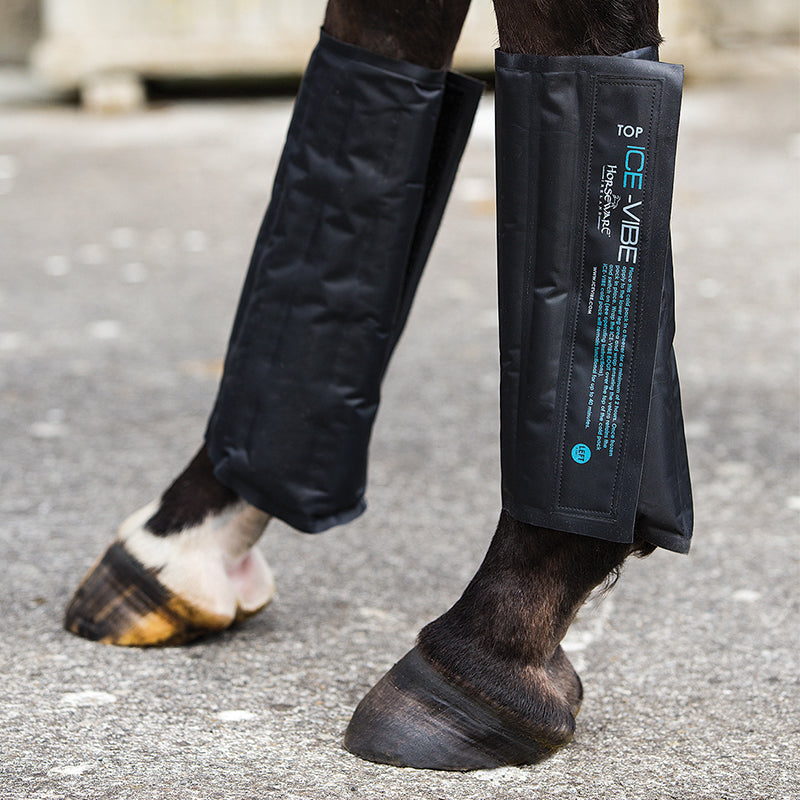Ice-Vibe Cold Packs (Legs)
- Regular price
-
$56.00 - Regular price
-
$25.00 - Sale price
-
$56.00
Estimated Shipping Widget will be displayed here!
Couldn't load pickup availability
Rug Fill / Weight Guide
The thermoneutral zone is the temperature range where the body can maintain its core temperature with little to no extra energy expenditure. For humans, this range is quite narrow at 21–28 °C, but for horses it’s much broader at 5–25 °C.
This difference means we should avoid rugging horses based on how cold we feel. Over-rugging can lead to serious health issues, including metabolic problems and thermoregulatory dysfunction.
Tips for Choosing a Winter Rug Weight
-
Clipped horses may need a heavier gram fill to stay comfortable.
-
Remember: horses warm themselves more easily than they cool down under a rug. If unsure, choose a lighter rug.
-
Check your horse regularly to make sure they are neither too hot nor too cold.
-
Consider your horse’s age and natural ability to stay warm.
-
As a general guide, rugging is usually appropriate when temperatures drop below 5–10 °C, but always adjust for your horse’s individual needs.
-
Always ensure rugs are waterproof. A wet rug is worse than no rug at all.
This is an indicative guide only. Always take into account factors such as wind chill, your horse’s age, weight, and condition.

Description
These Cold Packs are to be used under Ice-Vibe Boots to fit either front or hind legs.
Features
- Cold packs are cut on the diagonal to allow comfortable close fit and flared to fit over the fetlock joint
- Wide Velcro closure for adjust-ability
- Sold as a pair with a Right and a Left
- Now with Gel Beading for better quality and effectiveness
Instructions
Cold Packs can be used from the fridge or the freezer. Allow cold storage for at least 2 hours prior to use. If keeping in a freezer, we recommend storing in a plastic bag to prevent the cold packs sticking to the freezer or for freezer-frost to get onto the packs and then onto the horses' legs.
Can also be used for warm-treatments - using a basin of hot (never boiling) water, let the packs sit in the water to absorb heat and then apply to horse's legs. For most effective cooling of bloodflow, always use in conjunction with vibration to ensure circulation remains.
The only time vibration is not necessary is in the immediate cool-down after XC phase or after a race, as the heart-rate is sufficiently high to keep blood flow pumping. Once heart rate slows to normal or near normal, use vibration massage to encourage nutrients and oxygen into cells and tissues for repair and recovery as well as stimulating lymphatic drainage to reduce and potential inflammation.
Shipping Info
Shipping & Pickup Information
Flat Rate Shipping via Post Haste (Excludes Feed):
- North Island: $10 (1-2 working days)
- South Island: $20 (2-3 working days)
- Rural Surcharge: +$6 (extra time may apply)
Feed Shipping per bag via Post Haste:
- Central North Island: $14 Per Bag
- Upper North Island: $18 Per Bag
- Lower North Island: $28 Per Bag
- South Island: $55 Per Bag
- Rural Surcharge: +$6 (extra time may apply)
Orders placed before 1 PM are usually shipped the same day.
Click & Collect:
- Free 24/7 pickup via our after-hours collection box.
- Instructions will be emailed when your order is ready.
Returns & Exchanges
No problem! We offer 30-day returns and exchanges on all items in new, resalable condition with the original packaging. See our full policy.
FAQ
All your questions, answered.

The thermoneutral zone is the temperature range where the body can maintain its core temperature with little to no extra energy expenditure. For humans, this range is quite narrow at 21–28 °C, but for horses it’s much broader at 5–25 °C.
This difference means we should avoid rugging horses based on how cold we feel. Over-rugging can lead to serious health issues, including metabolic problems and thermoregulatory dysfunction.
Tips for Choosing a Winter Rug Weight
-
Clipped horses may need a heavier gram fill to stay comfortable.
-
Remember: horses warm themselves more easily than they cool down under a rug. If unsure, choose a lighter rug.
-
Check your horse regularly to make sure they are neither too hot nor too cold.
-
Consider your horse’s age and natural ability to stay warm.
-
As a general guide, rugging is usually appropriate when temperatures drop below 5–10 °C, but always adjust for your horse’s individual needs.
-
Always ensure rugs are waterproof. A wet rug is worse than no rug at all.
This is an indicative guide only. Always take into account factors such as wind chill, your horse’s age, weight, and condition.




